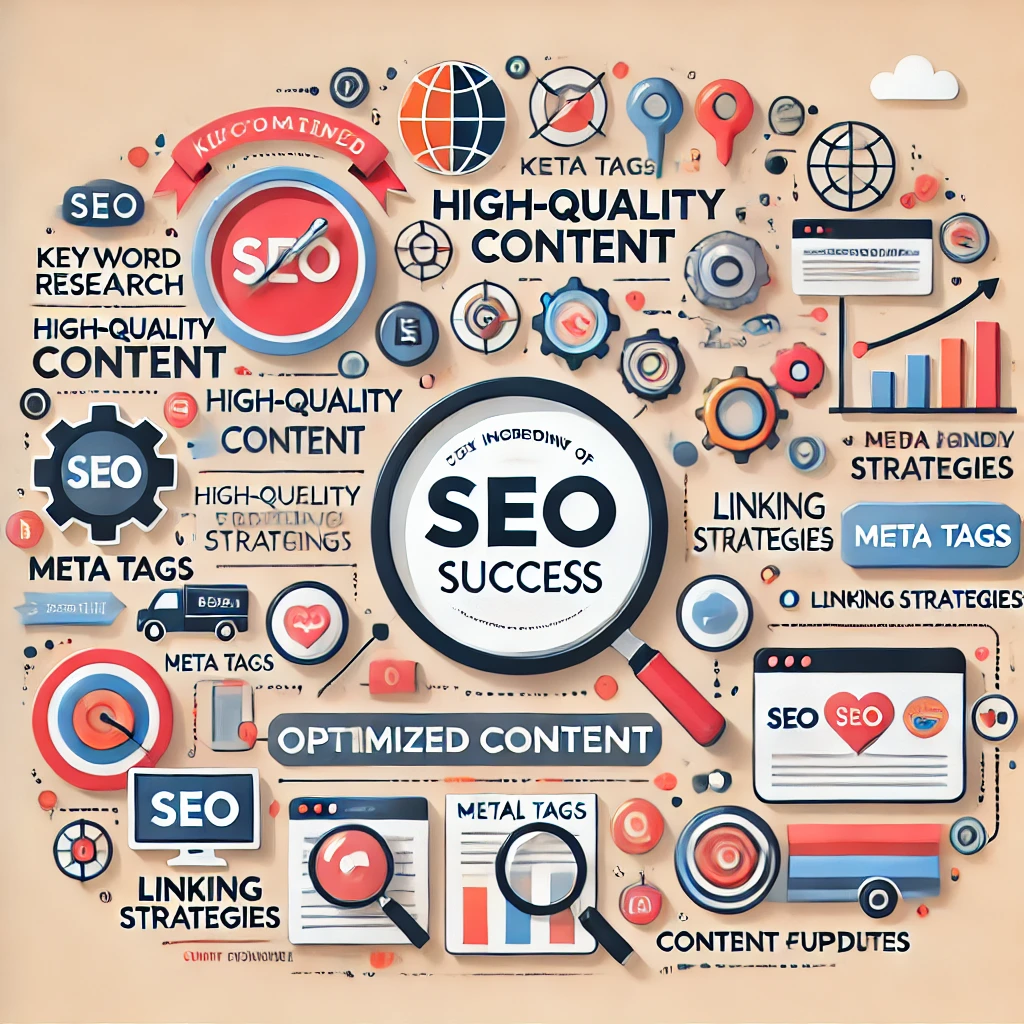Creating high-quality content is one of the most effective ways to boost your website’s SEO performance and increase organic traffic. However, many businesses struggle to create content that truly delivers results. According to research, nearly three-fourths of companies acknowledge that content marketing helps with lead generation. Yet, only 28% of marketers report their efforts as “extremely successful.”

Top SEO Misconceptions That Are Holding You Back in 2025
So, what differentiates high-performing content from the rest? The answer lies in content optimization. In this guide, we’ll explore the key ingredients of high-quality, SEO-optimized content that can help improve rankings and drive engagement.
1. Keyword Research and Optimization
Keywords are the foundation of SEO content. Without proper keyword research, your content may never reach its intended audience. Here’s how to optimize keyword usage:
- Use tools like Google Keyword Planner, Ahrefs, or SEMrush to find relevant keywords.
- Focus on long-tail keywords that have lower competition but high intent.
- Incorporate primary and secondary keywords naturally within your content.
- Optimize headings, subheadings, and meta descriptions with relevant keywords.
2. High-Quality and Engaging Content
Search engines prioritize content that provides value to users. To achieve this:
- Ensure content is original, informative, and well-researched.
- Use a conversational tone to make content more engaging.
- Incorporate storytelling, examples, and case studies to add credibility.
- Maintain readability by using short paragraphs, bullet points, and subheadings.
3. SEO-Friendly Formatting and Structure
A well-structured article improves user experience and increases dwell time. Here’s how to format your content effectively:
- Use H1 for the title, H2 for main headings, and H3/H4 for subheadings.
- Keep sentences and paragraphs concise for better readability.
- Add bullet points and numbered lists to break down information.
- Use a logical flow, starting with an introduction, followed by key points, and ending with a conclusion.
What Is Off-Page SEO & Why It Is Important?
4. Optimized Meta Tags and Descriptions
Meta tags help search engines understand your content, while meta descriptions improve click-through rates.
- Title Tag: Keep it under 60 characters and include the primary keyword.
- Meta Description: Keep it between 150-160 characters and make it compelling.
- Use alt text for images to improve image SEO.
5. Visual Elements and Multimedia
Enhancing content with visuals can increase engagement and retention. Consider using:
- High-quality images, infographics, and videos.
- Graphs and charts to illustrate data.
- Screenshots or step-by-step visuals for tutorials.
6. Internal and External Links
Linking strategies improve SEO and credibility.
- Internal Links: Link to relevant pages within your website to boost navigation.
- External Links: Cite authoritative sources to build credibility.
- Anchor Text: Use descriptive anchor text instead of generic phrases like “click here.”
7. Mobile-Friendliness and Page Speed
With mobile searches dominating, ensuring a mobile-friendly website is essential.
- Use a responsive design that adjusts to different screen sizes.
- Optimize images to reduce loading time.
- Minimize unnecessary scripts and use a fast hosting provider.
8. Content Updates and Refreshing
SEO is not a one-time effort. Regularly updating content keeps it relevant and valuable.
- Refresh old posts with updated statistics and insights.
- Monitor content performance using tools like Google Analytics.
- Repurpose high-performing content into different formats like videos, infographics, or social media posts.
Conclusion
Creating optimized content requires a strategic approach that combines keyword research, engaging writing, technical SEO, and regular updates. By following these key ingredients, businesses can produce high-quality content that not only ranks higher on search engines but also engages and converts their target audience.
By implementing these best practices, your content marketing efforts can drive better results, improving traffic, lead generation, and ultimately, conversions.

